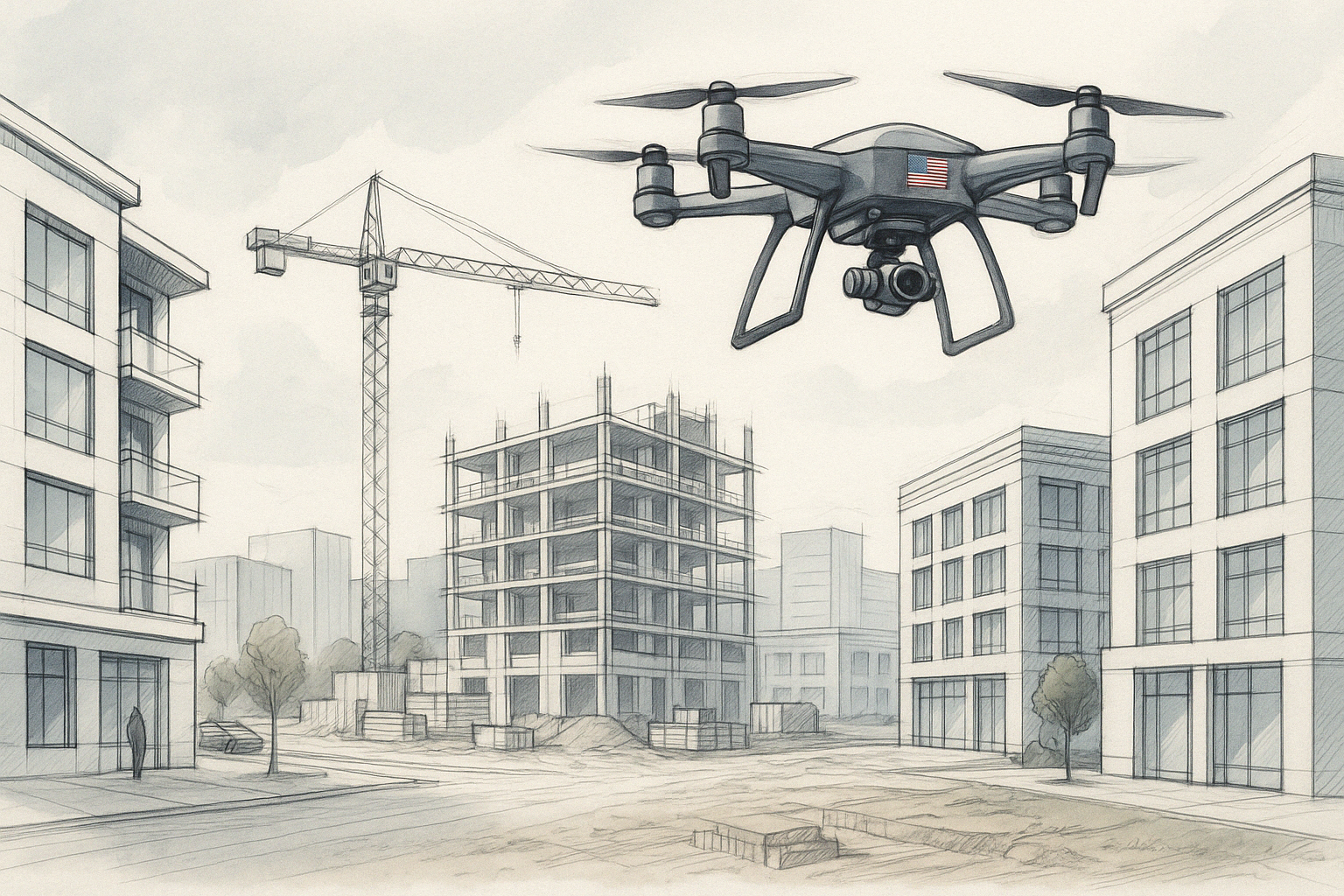SAN ANTONIO, July 09, 2024 (GLOBE NEWSWIRE) — Big Sky Medical, a leading healthcare real estate investment firm, today announced the acquisition of Sunset at Treeline, a cutting-edge m...
U.S.-Made Drones Take Flight in Real Estate Surveying as Security and Innovation Converge




As federal drone bans reshape the industry, American manufacturers are filling the gap with secure, high-efficiency platforms—offering real estate firms a strategic edge in a rapidly evolving market.
In the fast-moving world of real estate development, where timelines are tight and margins depend on accuracy, the rise of drone technology has changed the game. But as drone usage expands, a new set of concerns has emerged: data security, foreign surveillance, and regulatory pressure. These concerns are pushing real estate firms and technology providers to make tough decisions about the tools they trust.
That pressure intensified following a 2018 Department of Defense audit that revealed a startling vulnerability: nearly a third of widely used commercial drones were transmitting data back to China. “What the Air Force found was that approximately a third of those [commercial drones] were sending data back to China,” explains Rob Cammack, CEO of SmartDrone. The finding prompted a cascade of policy changes, culminating in the 2024 National Defense Authorization Act, which reintroduced the American Security Drone Act. This legislation prohibits federal agencies from using drones made by certain foreign entities. And while the law targets government departments, its effects ripple into the private sector—especially for companies managing infrastructure projects or public contracts.
Against this backdrop, U.S.-based drone manufacturer SmartDrone has positioned itself as an early responder. “One of our foundational principles was we were going to be the most USA Drone you could be,” says Cammack. “Components, US-owned company, US citizen employees—everything to get ready for what’s happening now.”
While some companies opted for foreign components to accelerate deployment, SmartDrone invested heavily in domestic engineering and manufacturing. “We invested millions of dollars in our engineering and manufacturing processes so that we could be ready for this moment,” he notes. Recent reseller demand trends suggest growing alignment with SmartDrone’s U.S.-based strategy. “When I started talking with resellers a couple of months ago, they said this couldn’t come at a better time. The resellers told me their DJI higher-end commercial drones sales were starting to drop and drop and drop.”
Supply chain control, Cammack argues, has become just as critical as cybersecurity. “One of the bottlenecks supply chain wise, and one of the restriction issues is motors and batteries. China had the market locked up on those,” Cammack explains. SmartDrone’s response was proactive: “I said we’re going so far in this new platform that we going to manufacture our own batteries. We started years ago, working with startup battery companies here in the US and motor companies in order to get in a situation where we could head off this issue.”
For real estate professionals, these upstream decisions translate into downstream benefits. Drone-assisted surveying has dramatically reduced data collection and inspection times. In one case, a Western U.S. Department of Transportation project cut topographic mapping time from 60 hours to just four. Construction firms have reported site inspection time savings of up to 80%.
These efficiencies directly impact how quickly development projects can break ground and stay on schedule. With tighter control of aerial data, firms can reduce risk, improve planning accuracy, and streamline documentation—all while remaining compliant with emerging data security standards.
But the innovation doesn’t stop with drones. Cammack sees a broader future for automation in surveying. “I foresee robotic dogs or humanoid robots being able to actually go out and do the on-the-ground surveyor work,” he predicts. That vision is already materializing. Boston Dynamics’ robotic dogs are currently used for infrastructure inspections, increasing access to hazardous or hard-to-reach environments while lowering operational risk.
SmartDrone’s product development also reflects a user-centered approach. “When I started this company, I said to our development team, ‘I don’t want you going and looking at other drones. I want you looking at our customer and what our customer needs,'” Cammack recalls. His guidance to the team focused on three priorities: creating the most transportable LiDAR/ortho drone, designing for friendliness, and ensuring ease of use—”so easy that my now 77-year-old mother could do it.”
As the drone industry matures, firms that adopt secure, American-made systems are better positioned to navigate both technological demands and regulatory scrutiny. For the real estate sector, where speed, precision, and compliance are increasingly inseparable, drones are no longer just helpful tools—they’re strategic assets. Those who embrace this shift with the right partners may find themselves not just keeping up with the market, but leading it.
Similar Articles
Explore similar articles from Our Team of Experts.


LINTHICUM, MD, June 10, 2024 (GLOBE NEWSWIRE) — NFM Lending and its Family of Lenders announced today that we have been recognized once again as one of the top lenders in the country b...


SAN DIEGO, CA, MEXICO, August 11, 2024 /EINPresswire.com/ — Glohab, Inc. is excited to announce the launch of its revolutionary INCABLOCK™ Construction System. This groundbreaking sy...


HOUSTON, June 14, 2024 — PermitUsNow, a leading building permitting firm, proudly announces its recognition as one of the Top 25 Subcontractors of the Year at the SubContractors USA Aw...


PASADENA, Calif., Aug. 06, 2024 (GLOBE NEWSWIRE) — CPP (Community Preservation Partners), a mission-driven affordable housing preservation developer, has announced the acquisition and...


